One of the most popular uses for drone thermography is solar panel inspection. Because a drone can cover large areas quickly, this makes a lot of sense. A drone thermographer can image hundreds of acres of solar fields in a fraction of the time it would take to chase down anomalies the old-fashioned way.
This makes drone thermal inspections the new normal for periodic inspections of large solar fields, enabling precise trend analysis over time. According to Greg Nagler, Global Business Development Director sUAS at Teledyne FLIR, “an often-overlooked value of thermal solar inspections is to perform a detailed inspection upon commissioning, both to provide a baseline set of images and data from which to start a trend analysis program and to catch faults that were caused by substandard installation, which may be covered under warranty.”
Nagler cautioned, however, that there are accepted standards that must be used to guide these inspections.
For example, IEC Technical Specification 62446-3 is a European standard many outside of Europe use as a guide to make sure they’re providing consistent, high quality thermal drone inspections of photovoltaic (PV) sites. These recommendations cover the type of inspection to be performed, the conditions under which the inspections should be performed, the equipment requirements, and personnel training requirements.
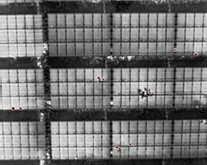
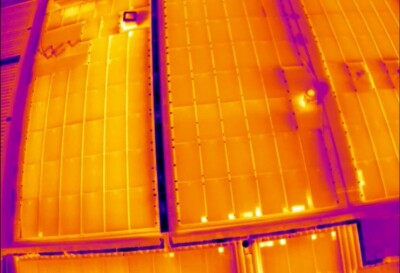
IEC Technical Specification 62446-3 details two types of inspections: simplified and detailed. A simplified inspection is looking for energy patterns and hot/cold spots, while a detailed inspection calls for temperature measurements meeting certain resolution requirements. The detailed inspection also requires a higher level of certification of the thermographer performing the inspection.
In order to fly a detailed inspection, Nagler reported, “you need to fly at an altitude that would produce a 3 cm-per-pixel ground sample distance on the panels. Given a six-inch square solar cell, this would allow you to get a five-by-five-pixel square inside of each cell from your flight altitude.”
Flying detailed inspections requires a camera that can perform adjustments for emissivity, reflected apparent temperature, and atmospheric effects. In other words, these aren’t apparent (or uncompensated) temperature measurements; they’re supposed to be true temperature measurements where all the usual standards for emissivity measurement and measurement accuracy apply.
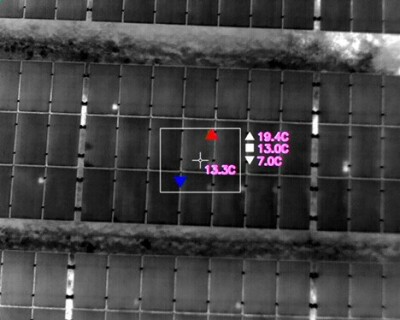
This is particularly relevant as some have fallen into the trap of thinking there is an industry standard for solar cell emissivity. There isn’t. Also, operators must remember the things that can impact an object’s emissivity, and its surface finish is very high on the list. Even a fine coat of dust on solar panels can materially change their emissivity enough to render any ‘standard’ value meaningless.
The angle at which the target is viewed also effects emissivity. This is an especially important thing for drone pilots to consider because we must adjust for sun reflections. “Just make sure you’re not significantly changing your viewing angle during a flight, and that you’re not looking at the panels at less than a 30-degree angle relative to the panel as this will increase its reflectivity,” Nagler recommended.
Another key factor to consider are the atmospheric conditions under which you perform your inspections. IEC Technical Specification 62446-3 contains relevant guidelines.
“The first thing to consider is the irradiance the panels are subject to,” said Nagler. “This is a measured value you should be taking before starting your inspection to make sure the system is being exposed to enough solar radiation to expose small faults.” The minimum irradiance called for is 600 Watts per meter squared.
“It is also recommended that the overall system be under at least 30 percent of its maximum rated load, though this would have to be verified with the operator in many cases, so irradiance is the most common value documented,” Nagler stated.
Wind is also an important factor. Too much wind will cause convective cooling of the panels, lessening the apparent severity of faults, or even disguising them altogether. The IEC specification calls for a maximum of 28 kph (17 mph) of wind at the panels. This can be measured with a properly calibrated anemometer.
“Since solar irradiance is a key factor determining the success or failure of an inspection, it makes sense that cloud cover plays a roll, too,” Nagler said. “The IEC specification treats cloud cover in the aviation standards of okta, saying that clouds should obscure no more than 2/8 of the sky.”
Finally, the conditions of the panels themselves is addressed. Specifically, soiling. “There should be little to no visible soiling of the panels because it will simultaneously alter the surface emissivity of the panels themselves,” Nagler explained, “but it can also cause heating in the panels because of the increased resistance. If possible, panels should be cleaned before being inspected.”
Ultimately, using the IEC technical standard as a guide will allow operators to perform consistent inspections over a long period of time. Adherence to these guidelines will also enable operator to provide their customers with consistent data over the life of the program.
Be sure to read part one of this series, How to Interpret Infrared Images Captured By Drones, part two, Temperature Measurement with Drones and Thermal Cameras, and part three, Conducting Overhead Electrical Drone Inspections.




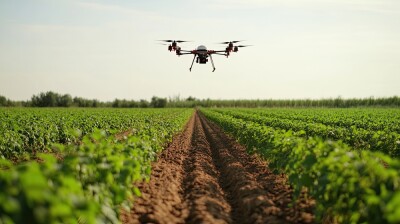
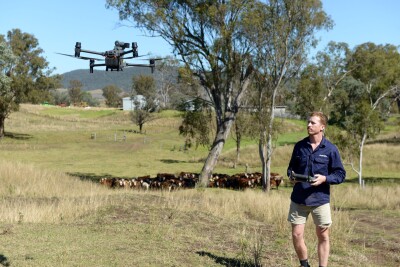










Comments